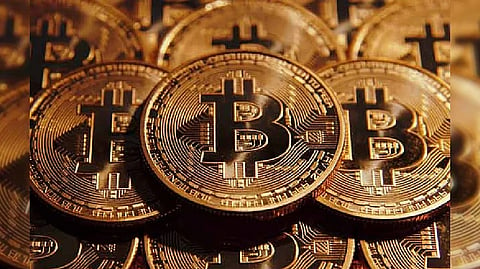

CHENNAI: Heads I win, tails you lose. This is perhaps the feeling among many Indian crypto investors today as the 30% tax slab looms mercilessly to already stressed investors.
Let’s understand this a little better. The Finance Minister had proposed taxation of virtual digital to provide that any income from transfer of any such asset would be taxed at the rate of 30%.
Further, as per the new rules, loss from one asset cannot be set off against gain from other assets. Moreover, gifts in virtual digital assets are also taxable in the hands of the recipient under the new rules. The government further clarified that any loss from one crypto asset will not be counted against the income from other crypto assets. Also, the cost incurred to the setting up of infrastructure will not be counted as the cost of acquisition while taxing income from crypto mining, the government said. This move is detrimental for India’s crypto industry and the millions who have invested in this emerging asset class.
Trading volumes across top cryptocurrency exchanges, including WazirX, CoinDCX, Unocoin and Bitbns, hit new lows having dropped by over 40 pc and trading volumes plummeted by over nearly 75 pc. The new tax regime coupled with MobiKwik, the largest wallet service provider withdrawing its services, is adding to the never ending woes. MobiKwik’s backing out is also not correct and frankly, baseless. Legally, none of this is wrong, going by the Supreme Court order on cryptocurrencies.
Trading volumes that are already tanking, are expected to drop even further when the 1% TDS kicks in July. High-frequency traders who provide liquidity in the crypto market, enabling efficient buying and selling of assets, would be impacted immensely. They operate on extremely thin margins, and locking up their capital with high TDS will restrict their ability to operate, lowering market liquidity and eventually impacting retail investors.
Another bombshell fell when Coinbase announced UPI-based payment for trading at their launch event in India recently. All of a sudden, NPCI realised that exchanges were using their services and UPI, which should not be an issue either. UPI is essentially the interface connecting banks.
I believe now retail investors may look out for other options, as they may opt for decentralised exchanges. These exchanges allow the users to use peer-to-peer (P2P) transactions without any interference from a third party.
Other investors are seeing opportunities in gaming and metaverse tokens as earning passive income on their holdings. They are also exploring staking - a process where holders of certain cryptocurrencies are rewarded by exchanges for allowing holdings to be used for validating blockchain transactions. The more adventurous ones are moving towards NFT’s as capital gain or loss do not apply here.
There is always a silver lining and as we create more awareness for retail investors, we will find avenues to not just invest but to earn passive income.
Trading volumes that are already tanking, are expected to drop even further when the 1% TDS kicks in in July. High-frequency traders who provide liquidity in the crypto market, enabling efficient buying and selling of assets, would be impacted immensely
Visit news.dtnext.in to explore our interactive epaper!
Download the DT Next app for more exciting features!
Click here for iOS
Click here for Android